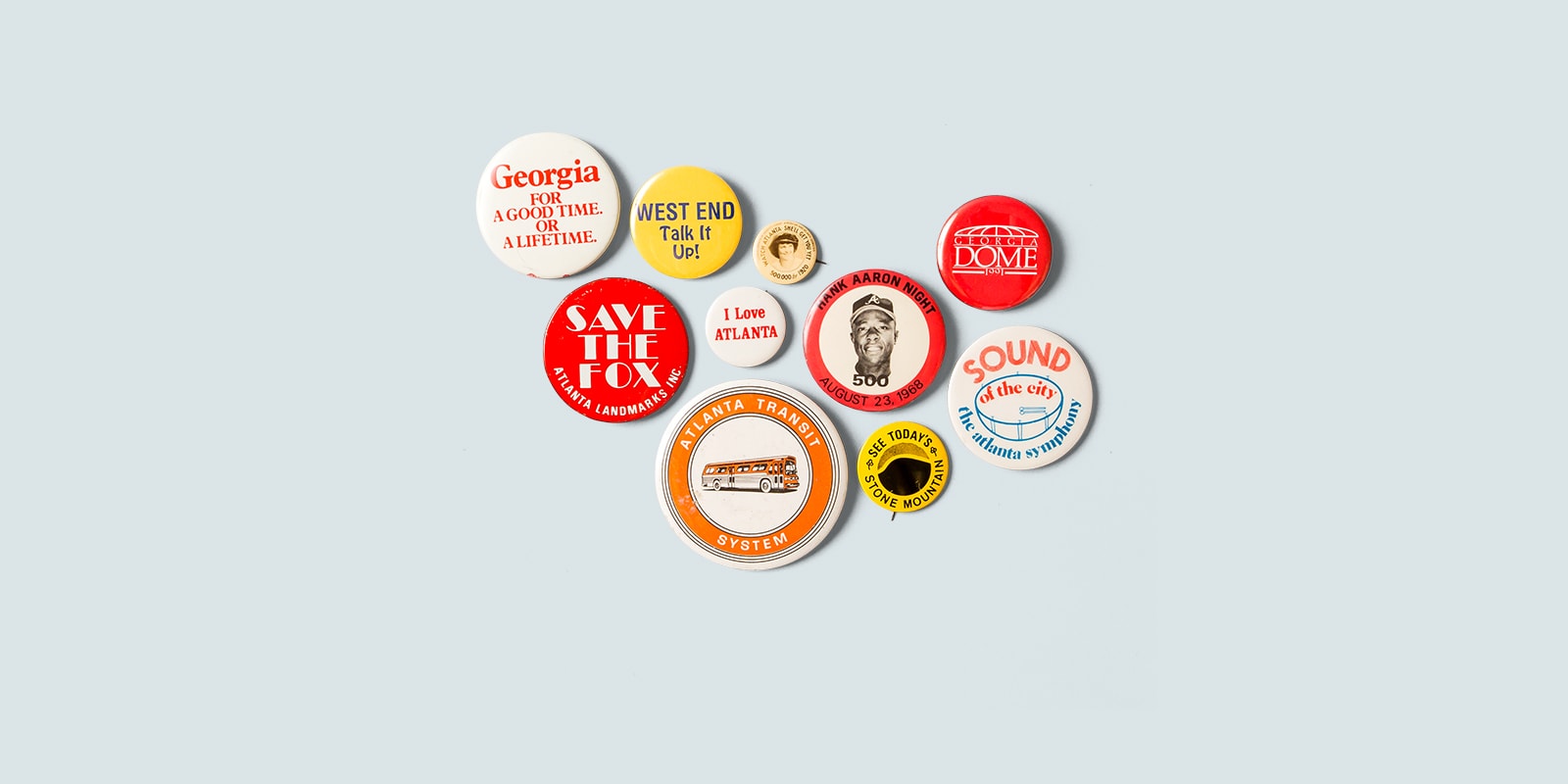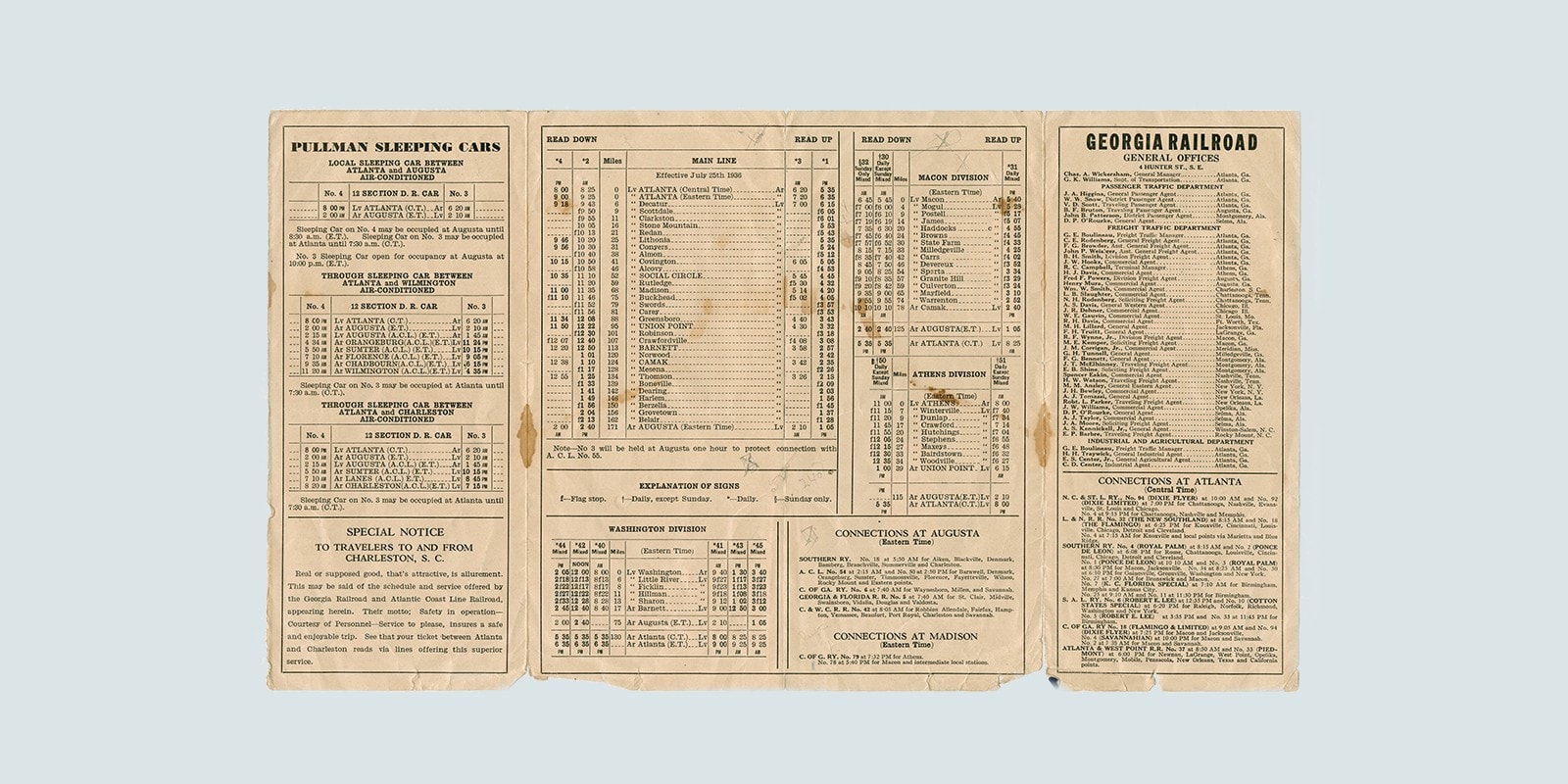Atlanta in 50 Objects
A pink pig and a renegade cow. A movie prop and a Coke bottle. A Pulitzer Prize–winning book and a Nobel Prize–winning icon.
How do you tell the story of Atlanta in 50 objects? We decided the best experts were Atlantans themselves—residents who cheer the Braves and rue I–285 rush-hour traffic, who understand how Civil War losses and Civil Rights victories together helped forge the city’s unique identity. Atlanta History Center asked the public to submit what objects they think best represent their town. The parameters were broad: an object could also be a person, a place, an institution, or an idea. After receiving hundreds of submissions, History Center staff assembled a collection of fifty pieces that represent the themes identified by the public. In addition to items from our own collections, we have partnered with many local institutions and individuals to gather artifacts from around the city to tell this community–driven story.


Railroads
Through the 1850s, Atlanta grew from a railroad junction to a burgeoning regional center.
In 1864, sitting at the junction of four railroads, the city was targeted by Major General William T. Sherman’s Union forces. In November, he left Atlanta’s rail lines in ruins.
By early 1867, all of the rail lines serving Atlanta had returned to operation and a railroad boom was underway that again linked the city to distant parts of the region and nation. Atlanta emerged as a transportation hub and a commercial trade center. Following World War II, the automobile and the airplane led to a steady decline in passenger rail travel. Today, Atlanta’s remaining rail passengers are served solely by Southern Railway’s small Peachtree Station at Brookwood.
Header Image: Georgia railroad timetable. interior, 1936. Kenan Research Center at Atlanta History Center

City Builder, January 1927. Kenan Research Center at Atlanta History Center